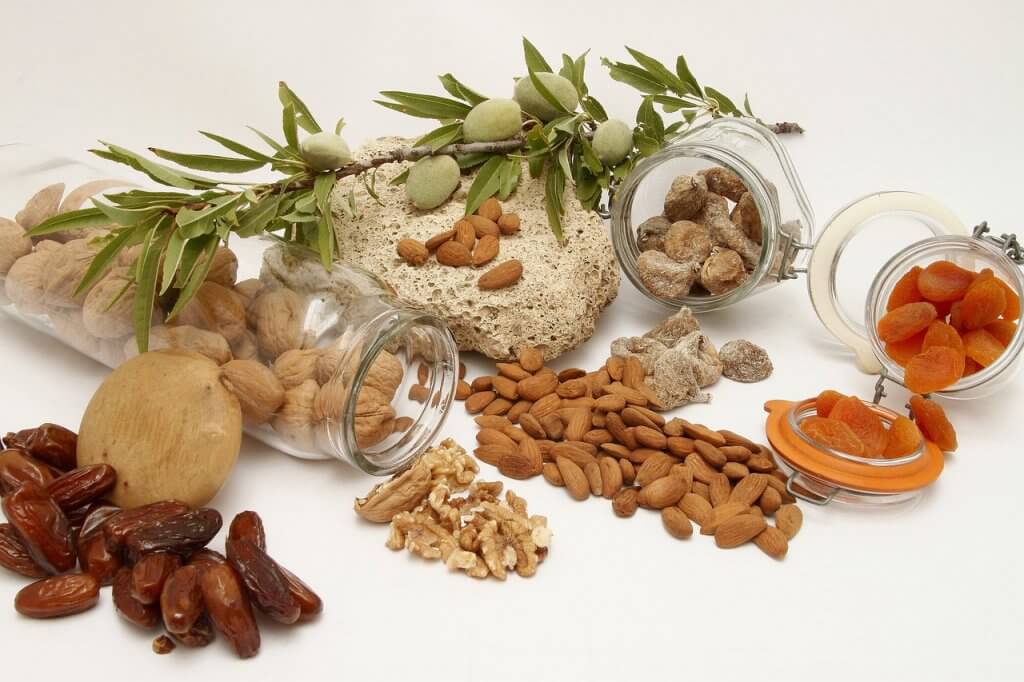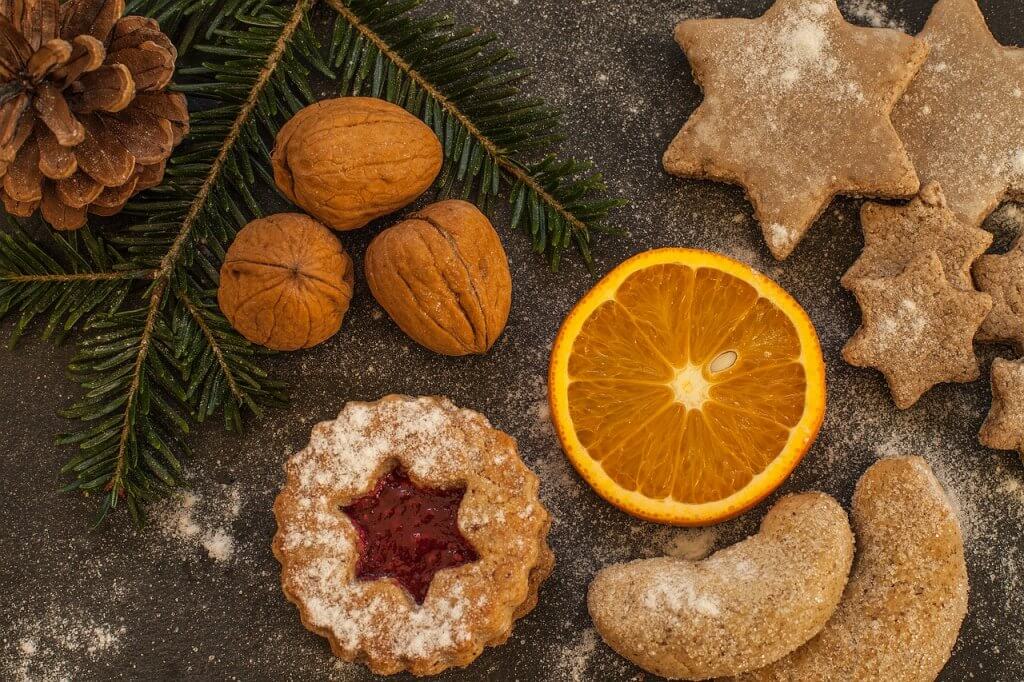No matter how you spin it, holiday cookies aren’t broccoli.
Let’s talk about that holiday cookie platter.
Groaning under the weight of sugary, buttery, floury bites of treasured tradition, it will soon make its annual appearance.
And completely freak you out.
Regardless of the December holiday you celebrate, it wouldn’t be the same without those special goodies.
In previous years you freaked out about the calories and fat, thinking too many indulgences would push the scale to new heights.
But since you’ve finished your breast cancer treatment, you view that cookie platter with thinly veiled terror.
- You’re nervous about the sugar (it feeds cancer).
- You want your body to be well-nourished. Cookies at every meal can’t nourish, can they?
- You can no longer tolerate or you wish to avoid dairy (no butter? whipped cream? eggnog?)
Hold on. We need to calm down.
There’s no need to fear the platter. I promise.
But there is a need to keep your current and future health goals in sight. And here’s how.
Bake with nourishing ingredients. On purpose. With intention.

WHAT ARE YOU TALKING ABOUT?
I’m talking about using ingredients that have a positive effect on health, with the potential to positively impact the initiation, promotion and progression of breast cancer.
Do cookies like that even exist?
Yes.
But let’s be real.
Holiday cookies aren’t broccoli. Yet it is possible to create holiday treats that taste spectacular AND give our bodies nutrients to work with.
They’re not mutually exclusive.
I call these special ingredients, ingredients with benefits – IWB’s.
You may be enjoying a holiday vacation, but your body never stops working to protect you. What do you say we give it a little help?

HOW TO BAKE WITH INTENTION
A recipe that calls for nothing but flour, butter and sugar will produce a gorgeous cookie, but it also produces nothing to nourish your body. You could argue that holiday treats and goodies aren’t meant to be nourishing. They’re meant to be indulgent.
My philosophy is, nourishing and indulgent make great bed fellows. It doesn’t have to be either or.
Allow me to introduce you to the idea of powering up your holiday treats with power-house ingredients.
You can have your cookies and eat them, too. With peace of mind.

INGREDIENTS WITH BENEFITS
Here are a few of my favorite IWB’s to get you started. . .
Cocoa – Outside of its unmatched flavor, the benefit of cocoa is a collection of antioxidants called flavonoids. Cocoa has more phenolic antioxidants than most foods, and has been shown to increase apoptosis (cell death) and antioxidant levels in the blood. (1, 2)
One to two tablespoons of natural cocoa powder provide about the same amount of flavonoids as half an ounce of dark chocolate, the amount suggested by studies to offer health benefits.
Be sure to use pure cocoa. Pre-made cocoa “mixes” tend to be made with alkali-treated cocoa (aka Dutch cocoa) which contains lower levels of beneficial flavonoid compounds.
Dried fruits (dates, figs, prunes) – The choice of dried fruits is as varied as the snowflakes falling outside your window. They’re all power-house ingredients, but dates, figs and prunes tend to be my top go-to’s.
Prunes are a delicious way to keep things moving in your digestive tract, but they also contain ursolic acid, a bioactive compound that in some studies has been observed to target signalling pathways that support potential anti-cancer activity. (3)
Dried figs are a great source of bioactive compounds, primarily anthocyanins, and dried dates are a good source of phenolics, carotenoids and antioxidants. (4, 5)
Whole wheat pastry flour – Pastry flour is a low-protein flour designed for baking cookies, cakes and pies that are perfect in texture; chewy, crispy, or light and airy, depending on the recipe.
For texturally-perfect and nutritionally-elevated treats, replace all-purpose flour in any recipe with whole wheat pastry flour. You can also use half all-purpose and half whole wheat pastry; you’ll get the same outcome with the added benefit of whole grains.
Flax – We have some (but need more) human studies on the connection between flaxseed and breast cancer. That said, current research suggests flaxseed has the potential to reduce breast cancer risk and tumor growth (mainly in postmenopausal women). (6, 7)
I’m comfortable using flaxseed as both a stand-alone ingredient and an egg “replacement.” I eat a predominantly vegan diet, so my baked goods are typically animal product-free. Flax “eggs” yield the structure I’m looking for.
Flaxseed adds fiber, phytochemicals, protein and omega-3 fatty acids. To get the full spectrum of health benefits, use ground flaxseed. You can grind whole flaxseed using a coffee grinder (you only grind what you need when you need it), or buy it pre-ground.
Quinoa – Quinoa may not be a food you envision in cookies, but you should!
I add uncooked quinoa to baked granola and raw, no-bake bars and balls. I use cooked quinoa in muffins and cookies.
Quinoa adds a delectable crunch when raw, heft and moisture when cooked. It also gives you amino acids, fiber, and a healthy dose of potassium.
If you have celiac disease or other gluten-intolerance issues, quinoa contains no gluten.
Maple syrup and Molasses – You can’t have baked goods without the sweet component, but for my taste, even recipes labeled vegan or “healthy” are overly sweet.
Unless you choose to, you don’t need to avoid white sugar completely. But I like to 1) dramatically reduce the amount called for, or 2) use an unrefined replacement.
I use a dry sweetener called sucanat in place of white sugar, and coconut sugar, maple syrup and molasses anywhere I can. (8)
Molasses provides calcium, iron, magnesium, and potassium. Maple syrup is a good source of vitamins and minerals, 100% natural and unrefined, and rich in polyphenolic lignans and the phytohormone abscisic acid. (9)
To maintain the integrity of an original recipe when substituting dry sweeteners with liquid, we need to do a little kitchen calculation. This will help!
By the way, you can reduce by one-third the amount of sugar called for in any recipe without negatively impacting the flavor or texture. Experiment with your favorites, you’ll be pleasantly surprised.
Nuts and seeds + Herbs and spices – Healthy fats, proteins and antioxidants, phytochemicals and bioactive compounds accompany the richness and depth of flavor these ingredients add to anything you bake.
Healthy Fats – Just as I swap out white sugar for something with more nutrition, I do the same with fats. Olive and avocado oil and two liquid oils I use regularly. Avocado oil is mild, so it can stand in for other fats without altering the flavor profile.
Olive oil has a more pronounced flavor that can peek through where you may not want it. Until you’re comfortable swapping, I advise using olive oil only in recipes that call for it.
Plant-based Spreads – Let’s be clear. Non-dairy butters and spreads offer nothing in the way of nutrition. But they do fill a void for people who eat a vegan diet or can’t tolerate dairy, and many do so without adding artificial, unhealthy ingredients (check labels to be sure.)

__________________________________________________________________________
Thanks for reading my blog post! Inspired and/or enlightened by what you read? Be sure to subscribe so you never miss a new post.
Subscribe by CLICKING HERE to get your FREE copy of The Five Foods Survivors Should Eat
CLICK THIS LINK and watch my 2-minute Peaceful Plate program video!
Follow me on Instagram @hormone.breastcancer.dietitian
This information is for educational purposes only and is not intended as medical advice. Please consult your dietitian or doctor for guidance specific to your needs.
_________________________________________
SOURCES
- Cocoa and Chocolate in Human Health and Disease
- Potential for preventive effects of cocoa and cocoa polyphenols in cancer
- Phytochemicals in diets for breast cancer prevention: The importance of resveratrol and ursolic acid
- Phenolic compound content of fresh and dried figs (Ficus caricaL.)
- A review on the nutritional content, functional properties and medicinal potential of dates
- The Effect of Flaxseed in Breast Cancer: A Literature Review
- Meta-analyses of lignans and enterolignans in relation to breast cancer risk
- Are There Health Benefits to Using Sucanat?
- Comparative analysis of maple syrup to other natural sweeteners and evaluation of their metabolic responses in healthy rats

